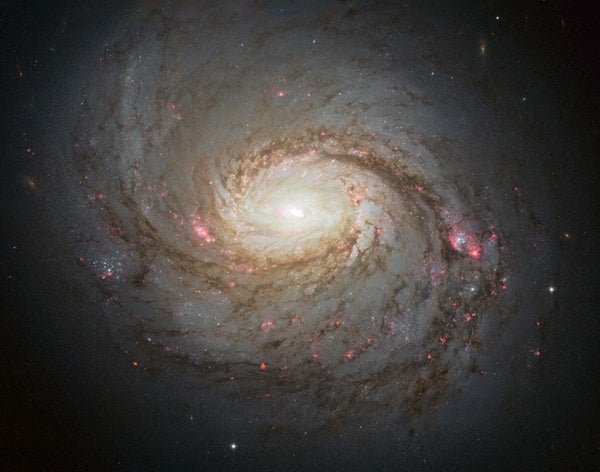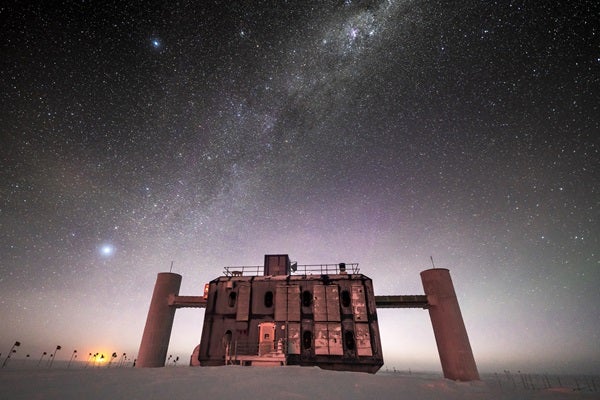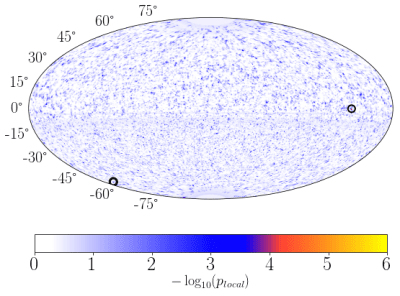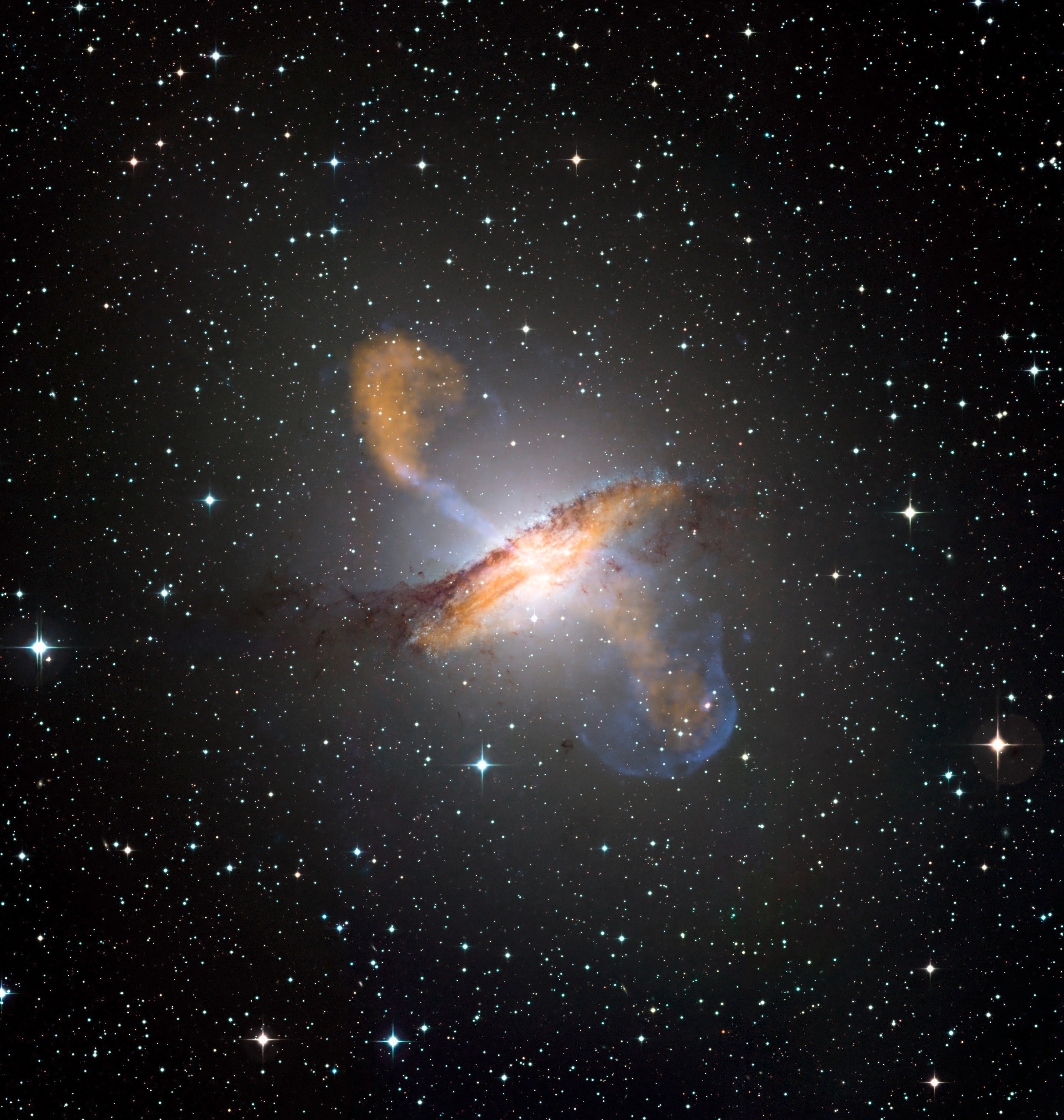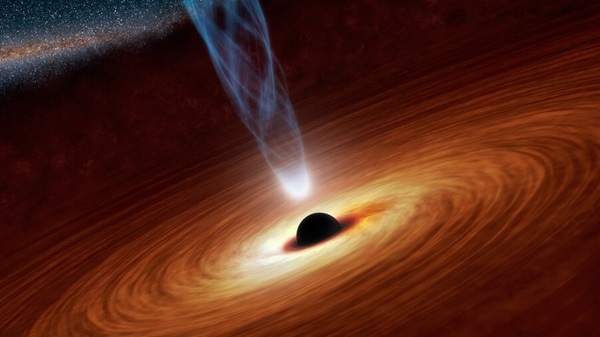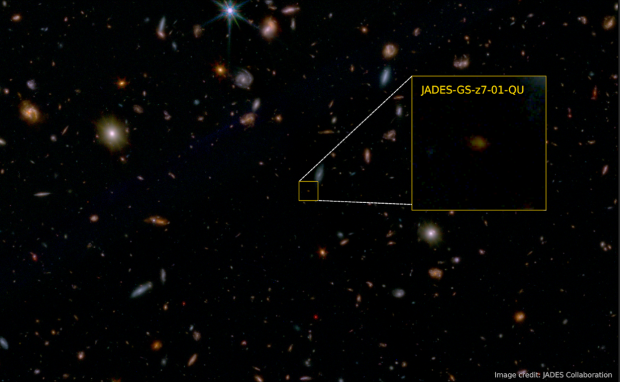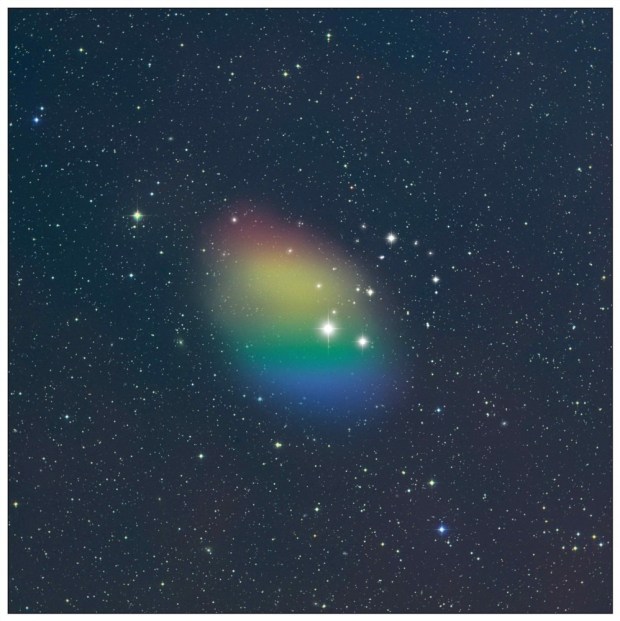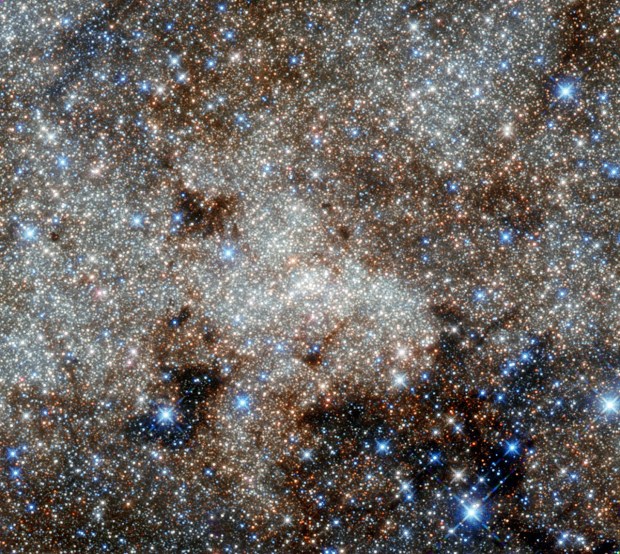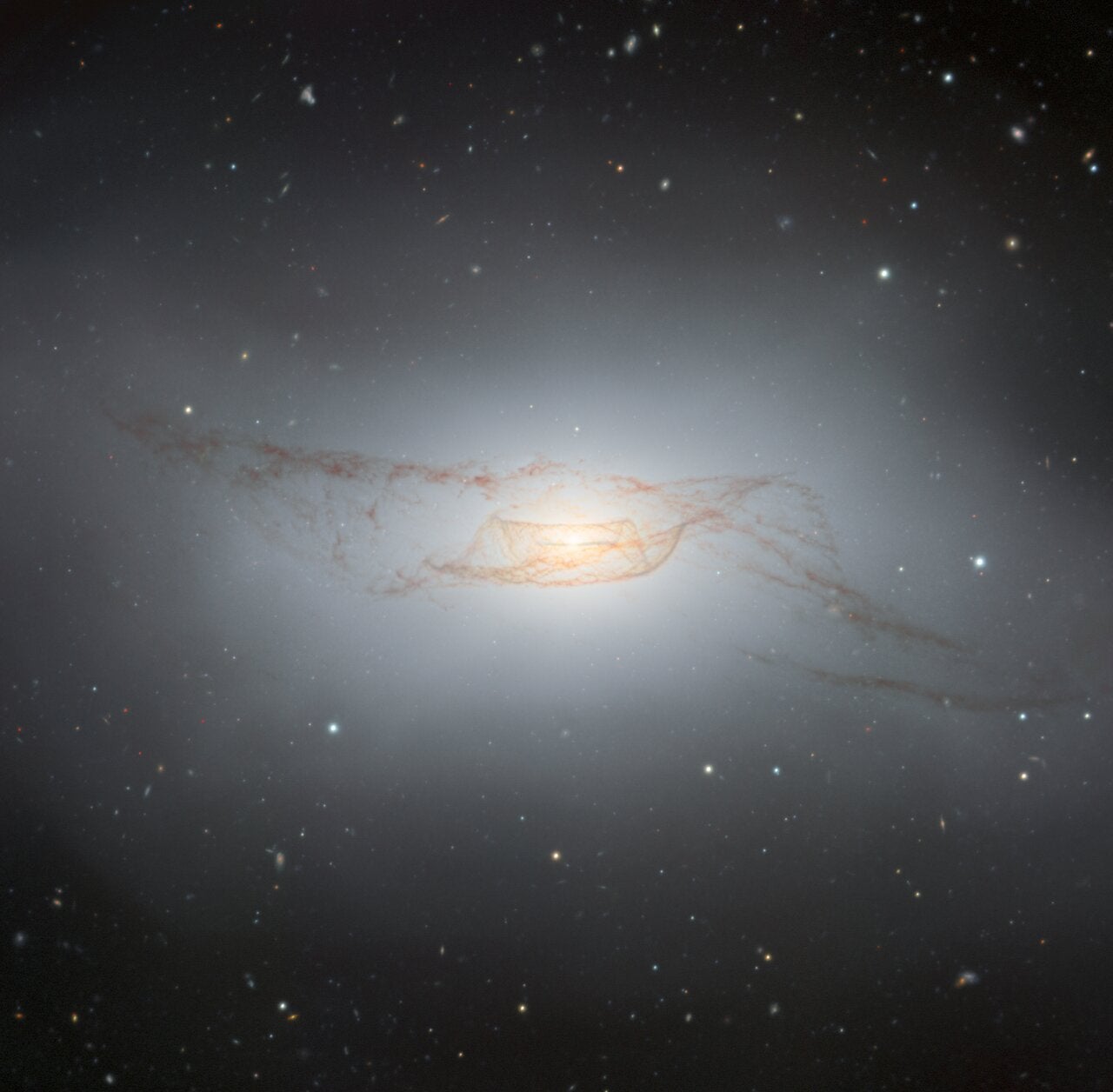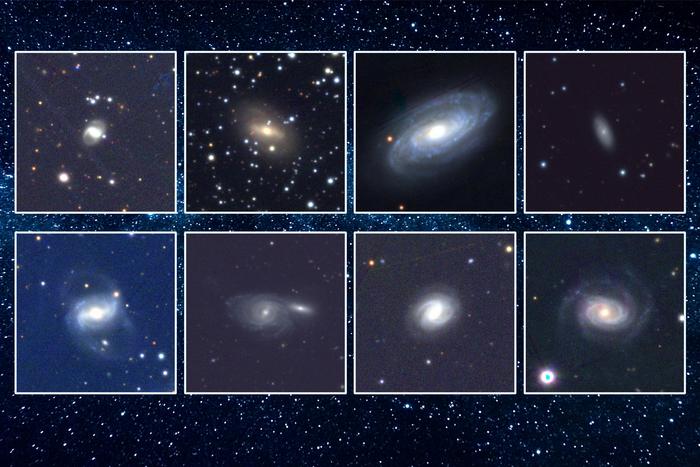The origins of neutrinos are notoriously hard to pin down. The cosmos is flooded by these ghostlike particles, which come from all over the sky. But for years, neutrinos’ elusive nature meant astronomers could point confidently to just one galaxy known to produce them.
Now, there is strong evidence for a second: the bright spiral M77 (NGC 1068) in Cetus. In a paper published Nov. 3 in Science, researchers report fresh observations from the IceCube neutrino observatory at the South Pole, plus improved analysis techniques that draw on machine learning. Combined, the results point to M77 as the origin of 79 neutrinos that IceCube has detected over the past decade.
That interpretation suggests that the supermassive black hole at the dust-obscured heart of M77 has a magnetic field that is acting as a powerful particle accelerator. But it also hints at answers to a larger astronomical mystery: how neutrinos are produced and how that process relates to other high-energy forms of light and matter that astronomers detect in the sky — cosmic rays and gamma rays. In M77, IceCube could be getting a glimpse of the origin of cosmic rays, says Francis Halzen, IceCube’s principal investigator and a particle physicist at the University of Wisconsin in Madison. In any case, Halzen is optimistic that more results will be forthcoming: “I think that we have the tools to solve the oldest problem in astronomy.”
Elusive particles
Theory predicts that neutrinos originate in some of the most energetic and violent regions of space: for instance, the cores of galaxies, when cosmic rays run into dust and radiation. The radioactive debris of such collisions eventually decays into neutrinos and gamma rays.
Observing this, however, is not easy. Neutrinos are not rare — roughly 100 trillion of them pass through your body every second. The difficulty is that unlike light, which is easily reflected or bent by mirrors and lenses, neutrinos barely interact with matter. A neutrino could travel through lead for a light-year before having a 50 percent chance of interacting with an atom.
In 2017, IceCube played a pivotal role in one of the first examples of a multi-messenger astronomy campaign, when the observatory detected a particularly energetic neutrino coming from a point in Orion. Follow-up observations from ground- and space-based telescopes — including NASA’s Fermi gamma-ray telescope — working across the electromagnetic spectrum showed that the neutrino likely came from a known blazar, TXS 0506+056, that was in the middle of producing a flare of gamma rays.
Blazars are prime candidates for generating neutrinos: They have central supermassive black holes spitting out jets of material at near-light speed aligned directly at Earth. However, the amount of neutrinos that IceCube has detected from TXS 0506+056 is much less than astronomers would expect if blazars were the sole source for all neutrinos seen across the sky.
This led astronomers to suspect that other types of galaxy could be producing neutrinos, too — ones whose gamma rays are “hidden,” perhaps obscured. An analysis of IceCube data published in 2020 tentatively identified one such candidate galaxy: M77 in Cetus, roughly 30 million to 60 million light-years away. It appeared to be the source of dozens of neutrinos, despite the fact that its core lacks the powerful jets seen in blazars. It is “a clear example of such [a] gamma-ray obscured cosmic-ray accelerator,” Khota Murase, an astrophysicst at Penn State University who was not involved in the work, told Astronomy via email.
But the evidence as of 2020 wasn’t strong enough for the IceCube team to claim M77 as a clear detection; according to the team’s analysis, the statistical significance was 2.9 sigma, meaning there was roughly a 1-in-500 chance that the build-up of neutrinos from M77’s location could be a random occurrence. It left open the question, “Was this real, or were these fluctuations?” says Halzen. But with the new paper, he says, “we have now answered this question.”
Improved analysis
The new analysis includes a bevy of improvements, including machine-learning techniques to improve the accuracy of the neutrino tracks and their energies. The team says it also has a better understanding of the optical properties of the ice and IceCube’s directional sensitivity to neutrinos. These factors push the statistical significance of the find up to 4.2 sigma. This is still short of the 5-sigma threshold that is considered the gold standard in physics, which equates to a probability that the signal could be a random error of just 1 in 3.5 million. Still, it is “great progress,” says Murase, who also penned a commentary for Science accompanying the paper.
IceCube plans to keep up its momentum. During the South Pole summer season spanning 2025 and 2026, the observatory will be upgraded with more sensors and new calibration devices. The additions will improve the telescope’s sensitivity and also allow for another improved reanalysis of 15 years of data, says Halzen.
The team has also proposed a next-gen version of IceCube with eight times the volume of the current observatory, which would be capable of confirming sources like M77 at the 5-sigma level and was endorsed by last year’s astronomy decadal survey.

